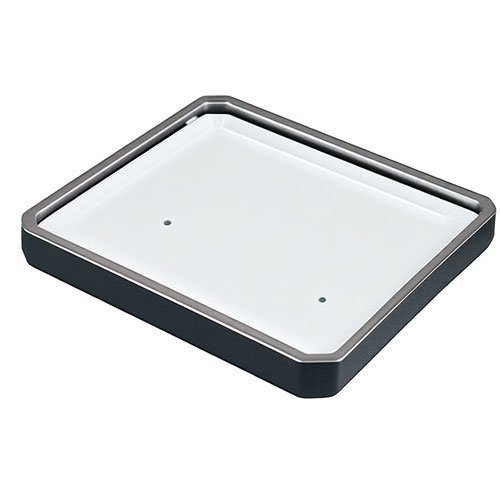In the rapidly evolving world of manufacturing, precision and durability are non-negotiable qualities that determine the success of a product. Among various materials, brass has gained significant popularity in CNC machining due to its unique properties. This article will delve into the world of brass CNC machined parts, unraveling their benefits, applications, and the machining processes that make them stand out.
Understanding Brass in CNC Machining
What is Brass?
Brass is an alloy primarily composed of copper and zinc, and occasionally includes small amounts of other elements such as lead, tin, or aluminum. This versatile material is prized for its machinability, corrosion resistance, and aesthetic appeal.
Properties of Brass
Brass exhibits a blend of properties that make it a sought-after material in CNC machining:
- Corrosion Resistance: Brass forms a protective layer that prevents rust and deterioration.
- Malleability: Easy to shape and form, brass can be machined into intricate designs.
- Thermal and Electrical Conductivity: Excellent conductivity makes brass ideal for electrical components.
- Aesthetic Qualities: Its golden hue and polishes well lend it a decorative appeal.
The CNC Machining Process for Brass
CNC machining refers to the process of using computer-controlled tools to manufacture parts. For brass, CNC machining involves several steps:
Material Selection
Choosing the right grade of brass, such as C260 (commercial bronze) or C360 (free-machining brass), is critical as it influences machinability and application suitability.
CNC Programming
The process begins with programming the CNC machine. CAD (Computer-Aided Design) software is used to create a detailed 3D model of the part. The specifications include dimensions, tolerances, and finishing requirements.
Initial Setup
The brass material is secured, and the machining tools, such as lathes or mills, are calibrated for the specific project.
Machining Process
Turning
In brass turning, the CNC lathe rotates the brass material while a stationary cutting tool removes material to shape the part.
Milling
CNC milling involves rotating the cutting tool while the brass workpiece remains stationary. This allows for the creation of complex geometries.
Drilling
Drilling is employed to create precise holes in brass components, essential for assembly and functionality.
Quality Control
Each part undergoes rigorous inspection using tools like calipers, micrometers, and coordinate measuring machines (CMM) to ensure accuracy.
Advantages of Brass CNC Machined Parts
Precision Engineering
CNC technology ensures high accuracy in dimensions, which is especially important for components requiring exact fits.
Durability and Longevity
Brass parts can withstand wear and tear, making them ideal for both aesthetic and functional applications in products that require longevity.
Customization Possibilities
CNC machining allows for large batches of customized parts, making it possible to meet specific customer requirements efficiently.
Cost-Effectiveness
While the initial investment in CNC technology may be high, the long-term savings in reduced material waste and increased efficiency can offset this cost.
Applications of Brass CNC Machined Parts
Brass CNC machined parts serve a broad array of industries, demonstrating versatility and functionality.
Electrical Components
Brass’s excellent conductivity makes it a popular choice for connectors, terminals, and other electrical applications.
Plumbing Fixtures
The corrosion resistance of brass ensures durability in plumbing applications, making it ideal for faucets, valves, and pipes.
Decorative Hardware
Brass parts are commonly used in furniture, cabinetry, and architectural fittings due to their aesthetic appeal.
Aerospace and Automotive
In the aerospace and automotive sectors, precision brass components are employed in various applications, including fittings and fasteners.
Challenges in Brass CNC Machining
Tool Wear
Brass can be tough on tools, leading to increased wear and tear, necessitating regular maintenance and replacement.
Heat Generation
Machining brass can generate considerable heat, which can impact the quality of the part. Effective cooling systems and proper feed rates are essential to mitigate this issue.
Material Availability
While brass is generally readily available, specific grades or forms may be harder to source, affecting production timelines.
Future Outlook for Brass CNC Machined Parts
Emerging Technologies
The introduction of advanced CNC machining technologies, including 5-axis machining, will enhance the complexity and quality of brass components.
Sustainable Practices
The manufacturing industry is increasingly focusing on sustainable practices. Brass, being recyclable, already meets a key criterion for sustainable manufacturing.
Market Trends
With a growing demand for customized solutions in various industries, the market for brass CNC machined parts is expected to expand significantly in the coming years.
Conclusion
Brass CNC machined parts represent a cornerstone of modern manufacturing, providing unparalleled precision, durability, and aesthetic appeal. By understanding the intricacies of the CNC machining process and its applications, businesses can leverage brass to elevate their product offerings. The future looks bright for brass CNC machining, with innovations and sustainable practices paving the way for continued growth.
By embracing the art and science behind CNC machining, businesses can not only enhance their operational efficiencies but also deliver exceptional quality to their customers. If you’re considering brass CNC machined parts for your next project, contact us today to explore how we can support your manufacturing needs!
—
- This article serves as a comprehensive guide to understanding and utilizing brass CNC machined parts, aimed at industry professionals and potential clients alike. Whether you are already established in the field or new to CNC machining, understanding the nuances of brass can set you apart in this competitive landscape.





